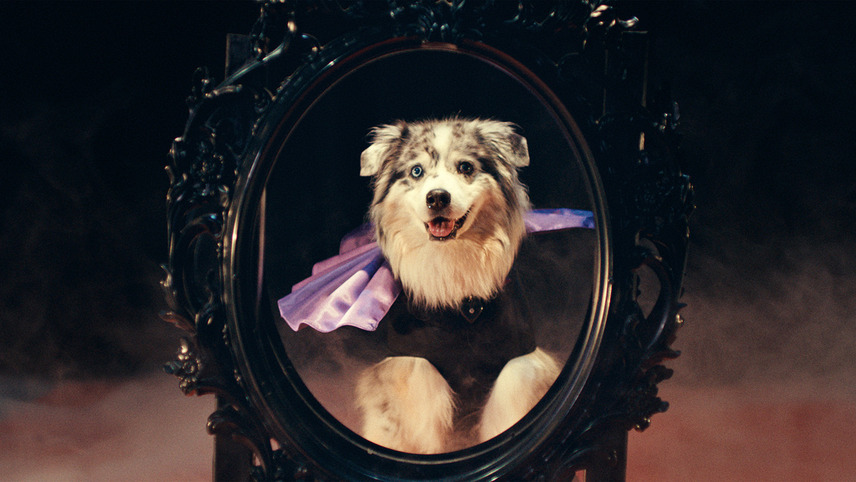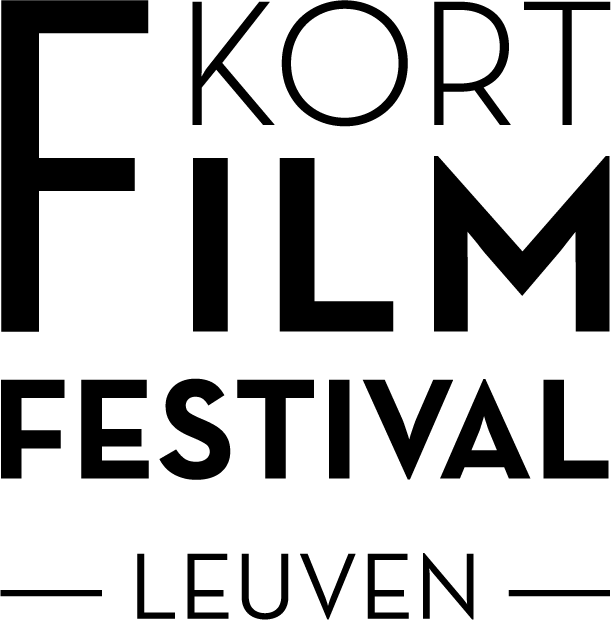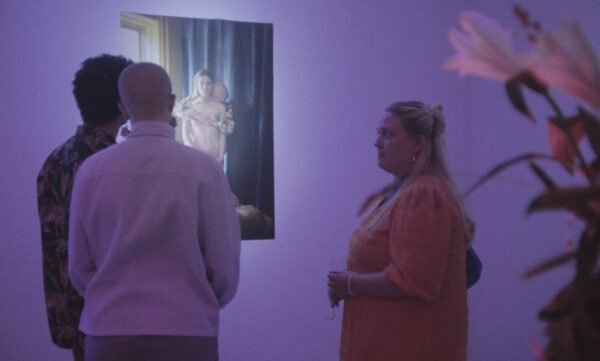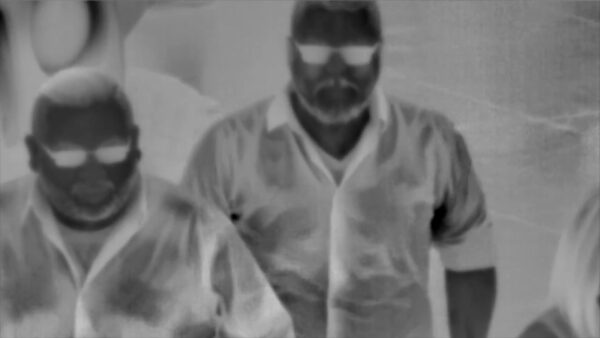The Leash of Love
Sit. Play. Stay.
Reflecting on the lives of dogs, Cecilie Flyger Hansen unlocks the true crux of their relationship with humans: affection can coexist with domination.

Focus on the hand that feeds you; don’t bite it. You may get a treat. Focus only on the hand. Listen to the words: Sit. Down. Come. Play. Listen and obey. You may get a treat.
Cecilie Flyger Hansen’s documentary short film Sit. Play. Stay. explores the relationship between humans and their beloved pets, blending fairytale visuals with subtle social commentary. Set in a “dog theater”, the film follows sweet Swedish women and their dogs as they re-enact the fairy tale of Snow White and the Seven Dwarfs. The whimsical fairytale setting blurs the line between documentary and allegory, and beneath it lies a narrative that is both heartwarming and unsettling, oscillating between the two to examine the emotional complexity of this bond —the nature of the human-dog relationship but also the subtle power dynamics that shape it.
The film opens with a quote from Ursula K. Le Guin: “My imagination makes me human and makes me a fool: it gives me all the world and exiles me from it.” In a similar vein, it is often said that symbolic thinking—and the language that arises from it—is a cage of thought that separates humans from other animals. Our ability to tell stories and reflect on experiences through language grants us the freedom to dream, but it also brings the burden of grappling with mortality. The antidote is dreaming, imagination, and so the circle continues. In Sit. Play. Stay. the dogs become extensions of their owners’ imaginations—deeply loved yet dutifully ordered, oblivious to the meaning behind their elaborate costumes. This creates an inherently uneven playing field in the “dog theater”. Language, as previously noted, grants us our imagination but can also be wielded as a tool of control, manipulation, and power—a loving attitude and care quickly turn into commands.
The stage glows, framed by lit candelabras and shrouded in a creeping fog, as eight costumed dogs elicit delighted gasps from the audience—a spectacle of sheer cuteness that borders on the surreal. Watching this, I remember how my childhood best friend—a golden retriever named Ressi—loved it when I read fairytales to her. At least, I thought so. An old picture of us posing together—both wearing pink cowboy hats—later introduced me to a new feeling after her passing. Was she ever truly happy playing with me, or was she perhaps sometimes scared of the burden of pretending to be human for me? The film highlights the same paradoxical dynamic between dogs and their owners, aiming not to vilify dog owners but to explore how the boundary between affection and dominance can sometimes blur. A “dog theater” is born out of great love for these animals—a space for bonding and play—but it can just as easily become a stage where the scripts of control overshadow their freedom and autonomy, replacing it with the fear and confusion of imposed demands.
Viewers are encouraged to look beyond the cultural mythos of dogs as humanity’s most loyal companions, bound to us by trust and devotion. The story switches between the perspectives of the trainers and their dogs. From the human viewpoint, the dogs are portrayed as symbols of pure, untouched sincerity. It cannot be denied that the owners love their dogs dearly, more than anything. But how much of this human love language can our animal friends really understand? When the perspective shifts to the dogs, the narrative takes on a semi-horror tone, exposing the unsettling undertones of a relationship shaped by affection, power, and unspoken expectations. Loyalty is rendered transactional, stripping the illusion of mutuality.
The film’s sound design plays a crucial role in shaping the tone and perspective of the dogs. Muffled background noise isolates key commands—sit, play, stay—as if to simulate the dogs’ auditory world, where only words that carry a meaning (a reward) stand out. These commands, stripped of their contextual nuance, become mechanical, highlighting the reduction of complex creatures to obedient subjects. The repetition of these words underscores the power dynamics in the relationship, leaving the viewer to reflect on the ethical implications of this conditioning. What we interpret as contentment may be mere compliance. By juxtaposing the love and loyalty of dogs with the control and power exerted by their owners, the film reveals an unsettling truth: affection can coexist with domination. Through its clever use of visual and auditory techniques, the film captures the complexity of this relationship, leaving the viewer to ponder the ethics of our interactions with animals.
The title Sit. Play. Stay. encapsulates the essence of the film’s exploration: a direct reflection of the commands that govern the dogs’ lives and, by extension, their relationship with their owners. The simplicity of these words belies the complex power dynamics they represent. They are commands stripped of agency, emphasising compliance over autonomy, routine over freedom. The title becomes a chilling refrain, a mantra of control that frames the bond as one of necessity rather than mutual understanding. Sit. Play. Stay. reminds us that even in the warmest depictions of companionship, the relationship between humans and animals is often one-sided, leaving us to question how much of it stems from love—and how much from obedience.
This text was developed during the European Workshop for Film Criticism #6—a tandem workshop set during Kortfilmfestival Leuven and Vilnius Short Film Festival—and edited by tutor Savina Petkova.
The European Workshop for Film Criticism is a collaboration of the European Network for Film Discourse (The END) and Talking Shorts, with the support of the Creative Europe MEDIA programme.








There are no comments yet, be the first!